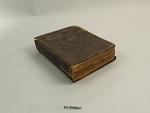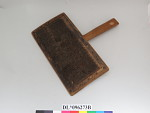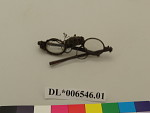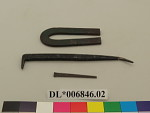Copp Family
Description
This object contains three almanacs from 1733-1799, hand-bound together in brown corduroy. The almanac (archaically spelled almanack) spread valuable information during a time when newspapers were scarce. Their popularity with the public and low overhead made them attractive for publishers as well. While almanacs may be known for their farmer’s calendar or weather forecasts, they also served as calendars that marked holidays, feast days, and notable historic dates. The calendar also tracked the transit of celestial bodies and included related astrological guidance. Additional materials included literary extracts, poetry, a list of roads and their mileage to major cities, medical advice, cooking recipes, patent notices, rates of interest, short histories, political discussions, schedules of courts, and practical advice. The diversity of topics made the almanac useful for every strata of society, creating an early form of mainstream culture. Almanacs were usually just bound by sewing, but the Copp’s compiled these into one bound volume, speaking to its usefulness as a resource even after the year they were published had passed.The Copp Collection contains about 150 books of early American imprint and shows a wide range of reading matter typical of a New England Puritan family living in a port town. Literacy was expected of many New Englanders, as Puritan doctrine required everyone to read the Bible. The abundance of multiple Bibles, psalms, hymnodies, sermons, and morality tales reflects the Copp’s religious beliefs. Other highlights of the library include the works of Shakespeare, almanacs, historical and political texts, and travel narratives.The Copp...
Corduroy (Overall Material)Cotton (Overall Material)Linen (Overall Material)Paper (Overall Material)
Gift of John Brenton Copp





















